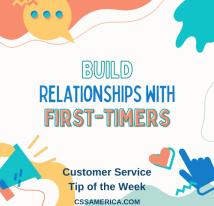
Vince Lombardi – famous professional football coach – became a big hit on the speaker’s circuit during his time coaching. He applied many of his principles in football and life to business, and one of his great business quotes is: Confidence is contagious and so is lack of confidence, and a customer will recognize both.
Whether the customer is anxious or not, you want them to feel confident in what you or your organization are going to do…confident in what you or your organization says. You want to impart your confidence to them.
You want to assure them that issues will be resolved, orders will be filled, and needs will be met. You want them to be confident, and their confidence benefits you. The more confident they are, the fewer questions they’ll ask. The more confident they are, the fewer times they’ll contact you for updates. The more confident they are, the more patient they will be in gaining closure on the situation.
So how do you build confidence in the moment? You need to assure them. Assurance is about your being confident – with your words and tone and body language. It’s about conveying positivity, and it’s about more than you simply telling them the outcome that will occur:
- Show them the plan – the steps that will get them from Point A to Z.
- Prove how many times you’ve helped customers in similar situations.
- Tell a story of a recent success example – how someone in their position got the outcome they’re seeking.
- Promise or guarantee or pledge what you’ll do next or how you’ll shepherd the situation through to a final positive outcome.
To build a customer’s confidence, convey your confidence, and assure them by helping them visualize the path to a positive solution.
Signup for FREE Tips! Contact Us More Resources for You Visit Our Home Page























